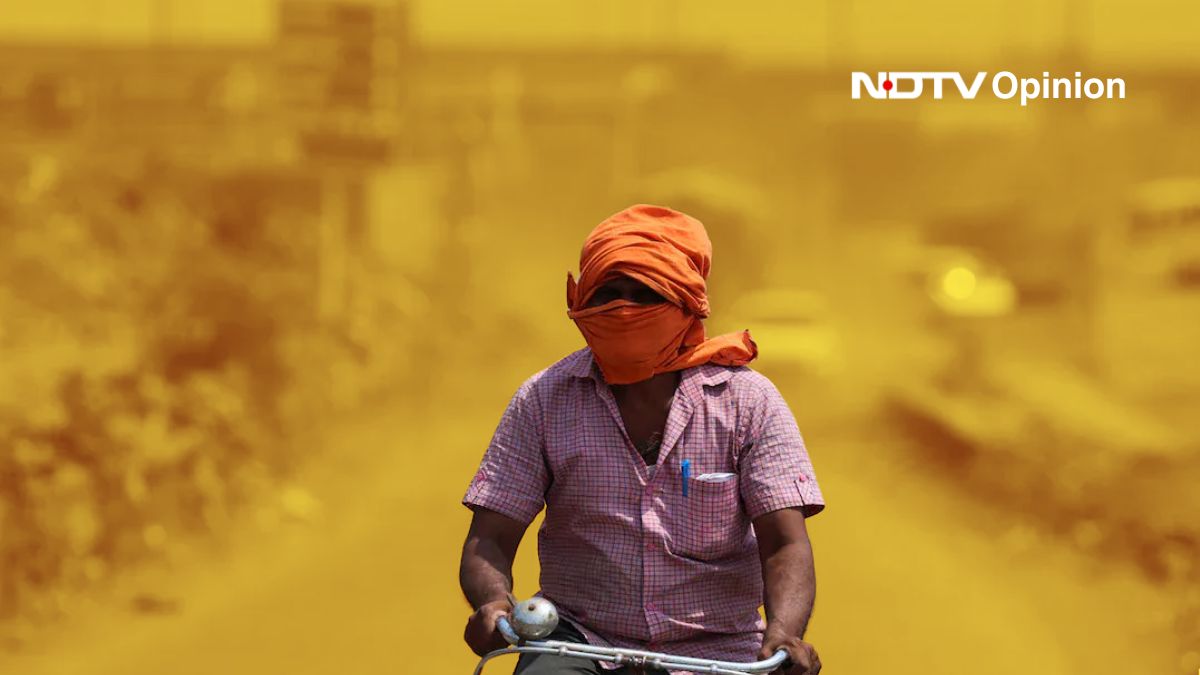Credit: Reuters
Delhi's meteorological and political climates seem to be in perfect sync this year. After the infernal heat and dust, the city is holding its breath. It's like being transfixed by the cobra's eyes. Everything is at a standstill. A pregnant pause. While the new parliament is in session, nothing significant has been achieved yet, either by the ruling party or the opposition.
No, Rahul Gandhi becoming the Leader of the Opposition does not count as a significant event. This was along the predicted lines. Similarly, a drop in the mercury is not worth any mention. After twelve months of dealing with "the twelve hottest months in the history of the planet", a promise of rain feels nothing more than trolling.
Delhi Lives On
Delhi is not even complaining anymore. There is a new emergency heatstroke unit now at Ram Manohar Lohia Hospital where patients are being given ice baths to save their lives. Delhi has recorded at least 14 heatwave days, the highest in at least 14 years. There's something deeply satisfying about such numerically synchronised stats, no matter what horrors they imply. Two hundred and seventy-five people have been recorded as fatal victims of the heatwave since mid-May in Delhi. The actual numbers are certainly much higher. Delhi is cranking up the air-conditioning.
Also Read | 20 Dead In Delhi Heatwave, Centre Orders Hospitals To Prioritise Treatment
Even the chief minister's continued incarceration is not making people's - his voters and supporters' - blood boil (the Aam Aadmi Party office at Rouse Avenue has more police around it than supporters). Delhi has a habit of slinking into complacency when 'terrible' becomes just a notch better and gets categorised as 'bad'. Yes, it's a hot day, but it's not as bad as yesterday. Our collective memory of heat and dust is rather short. Or, it is too long. Going back centuries and millennia.
"A Desert Like That Of Karbala"
"The city has become a desert, and now that the wells are gone and water is something rare and precious, it will be a desert like that of Karbala." Battling a severe water crisis in summer, Delhi is thus described by one of the best-known Urdu poets of all time. Only, the year is 1859 and the poet is Mirza Ghalib. Such is the curse and charisma of Delhi, the more it changes, the more it stays the same.
Also Read | Heatwave: Death Toll Climbs To 143 Across India
Delhi's water crisis has worsened over the years. And so has its air. Unfortunately, nobody pays attention to these issues until there is a perfect time for it. In other words, whenever a convenient scapegoat is found. Air pollution, therefore, will only be talked about in the winter, just in time for Diwali and the harvest of rice. The moment the Haryana and Punjab farmers start to clear out their farms, Delhi complains of being choked. Facts and Air Quality Index (AQI) monitors be damned that throw up horrifying numbers all year long. The AQI reading for today, a pleasant day, is 300. Very pleasant indeed! Water is scarce today but in no time the city will be inundated, thanks to a swelling Yamuna and clogged or absent drains.
Dysfunctional But Functioning
None of this is new. Delhi goes on. It has taken it upon itself to show Mumbai its place. What do you mean by the spirit of Mumbai? Even Delhi is willing to stay charred or flooded for days and still be 'functional'. At least as functional as wealthy club-goers insisting on getting behind the wheel after a gallon of alcohol in their bodies.
What Delhi does not do is value accountability. And here is the catch. Once you start seeking accountability, you have to be accountable, too. Power outages, for example, can not be only owing to the faulty gear of the power companies or soaring demand etc. Surely, electricity theft and wastage at individual and institutional levels have a role to play in it. Similarly, air pollution may have something to do with the countless cars on the roads. It's a big stereotype in the West that Delhi folk - the privileged lot that can afford foreign travel - are extremely poor walkers. Yes, despite boasting of one of the best public transport infrastructures in the country, Delhi relies on its private motor vehicle ownership.
The Many Delhis
Delhi is second to none when it comes to flouting norms and laws in its quest to build and build some more. The city is perpetually under construction. According to a recent survey done by Ahmedabad's Indian Institute of Public Health, more than 60% of construction workers suffer from heat stress during summer. Despite the Labour Ministry's 2023 directives to construction companies for a change in working hours and humane work conditions, nothing has changed on the ground, thanks to the absence of strict enforcement. As long as the privileged in Delhi get their draft of cool air from their car ACs, they don't care who drops dead next to their boiling vehicle.
Delhi builds, Delhi sizzles, Delhi dies. Often, it's not the same Delhi.
(Nishtha Gautam is a Delhi-based author and academic.)
Disclaimer: These are the personal opinions of the author






Leave a Reply